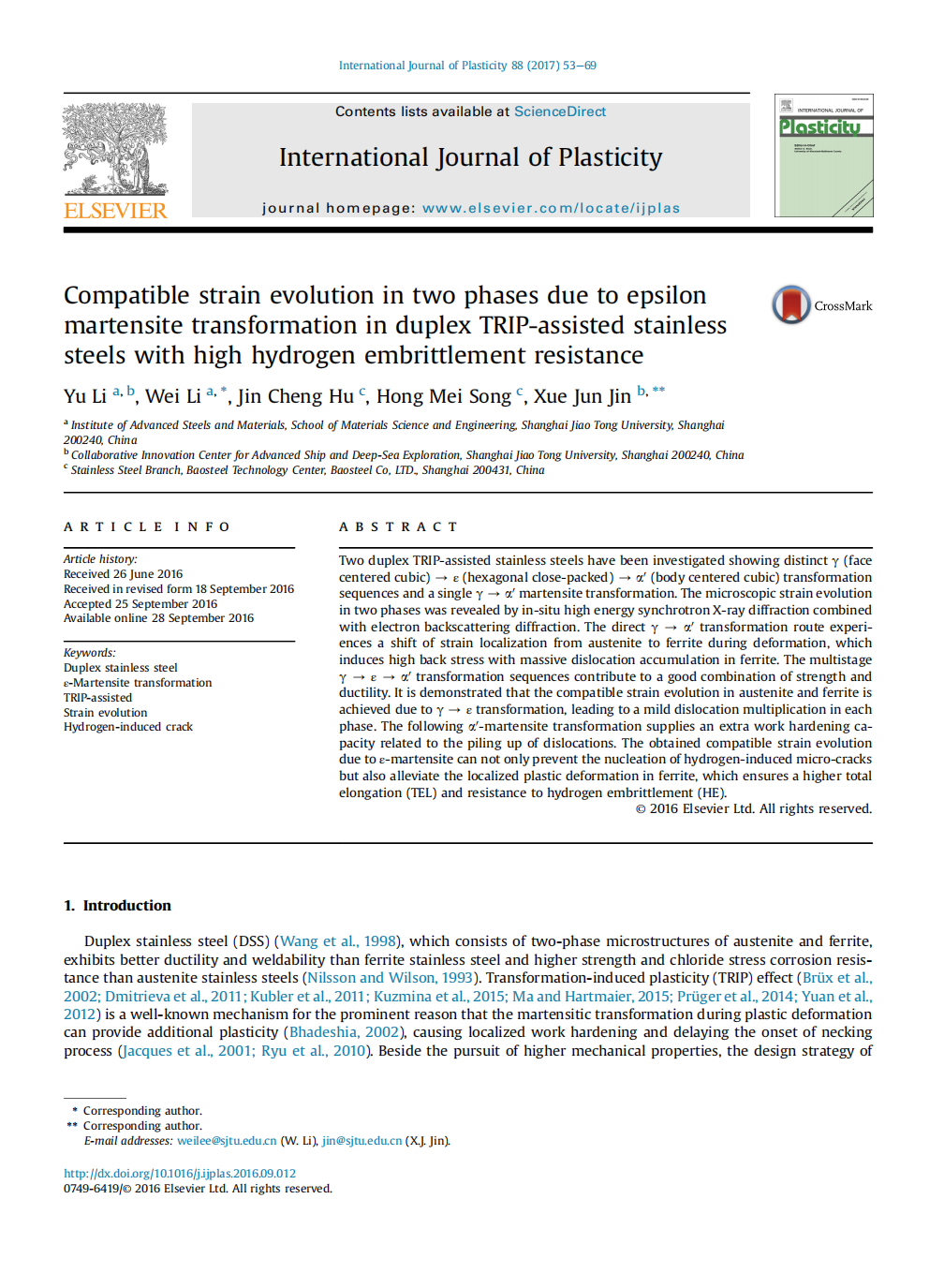Two duplex TRIP-assisted stainless steels have been investigated showing distinct g (face centered cubic) / ε (hexagonal close-packed) / a0 (body centered cubic) transformation sequences and a single g / a0 martensite transformation. The microscopic strain evolution in two phases was revealed by in-situ high energy synchrotron X-ray diffraction combined with electron backscattering diffraction. The direct g / a0 transformation route experiences a shift of strain localization from austenite to ferrite during deformation, which induces high back stress with massive dislocation accumulation in ferrite. The multistage
g / ε / a0 transformation sequences contribute to a good combination of strength and ductility. It is demonstrated that the compatible strain evolution in austenite and ferrite is achieved due to g / ε transformation, leading to a mild dislocation multiplication in each phase. The following a0 -martensite transformation supplies an extra work hardening capacity related to the piling up of dislocations. The obtained compatible strain evolution due to ε-martensite can not only prevent the nucleation of hydrogen-induced micro-cracks but also alleviate the localized plastic deformation in ferrite, which ensures a higher total elongation (TEL) and resistance to hydrogen embrittlement (HE).
